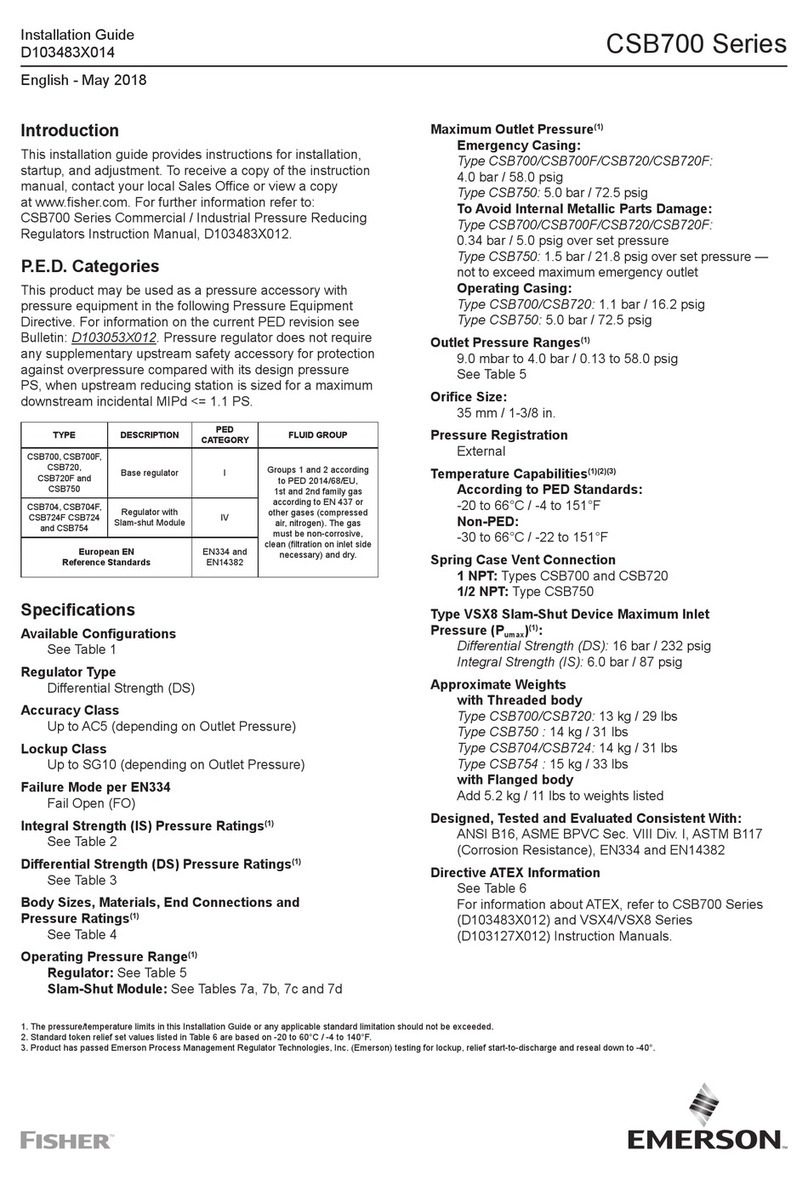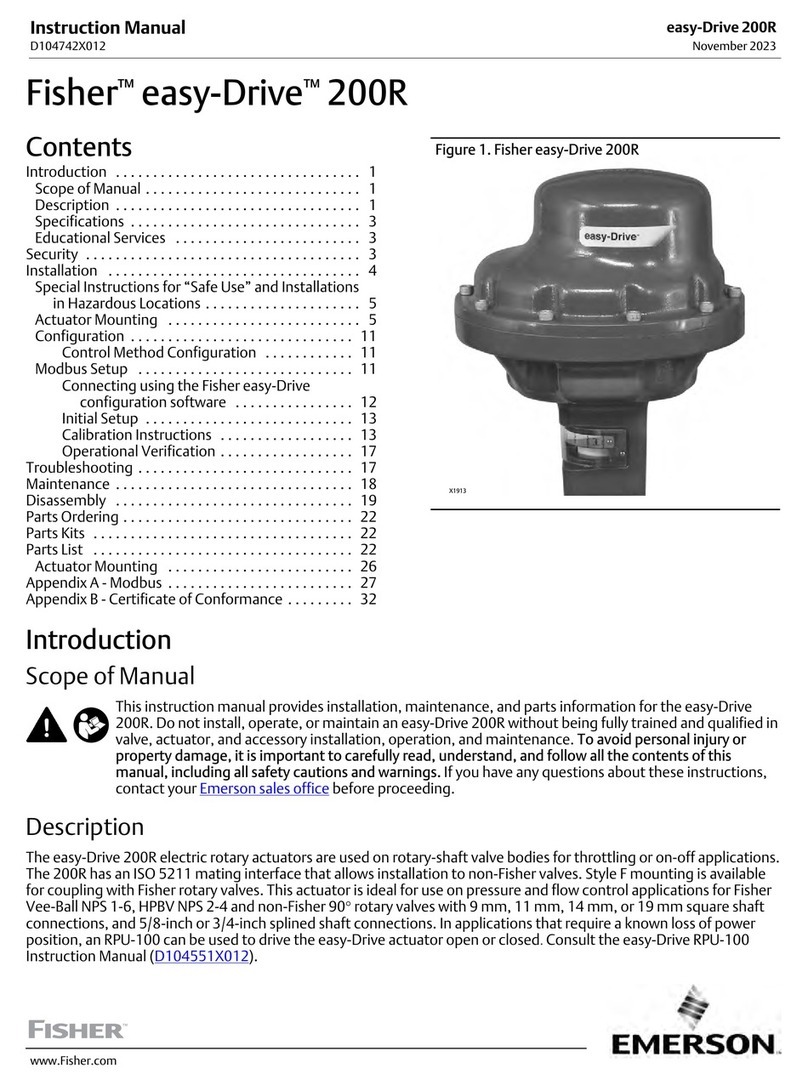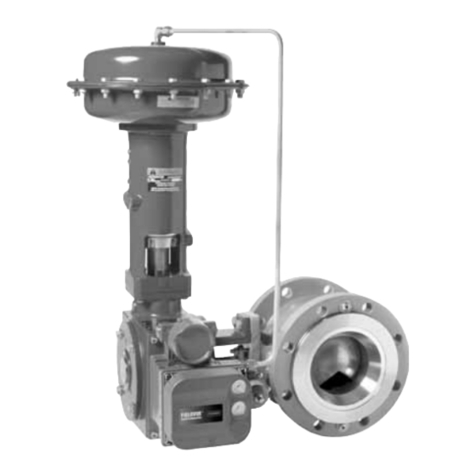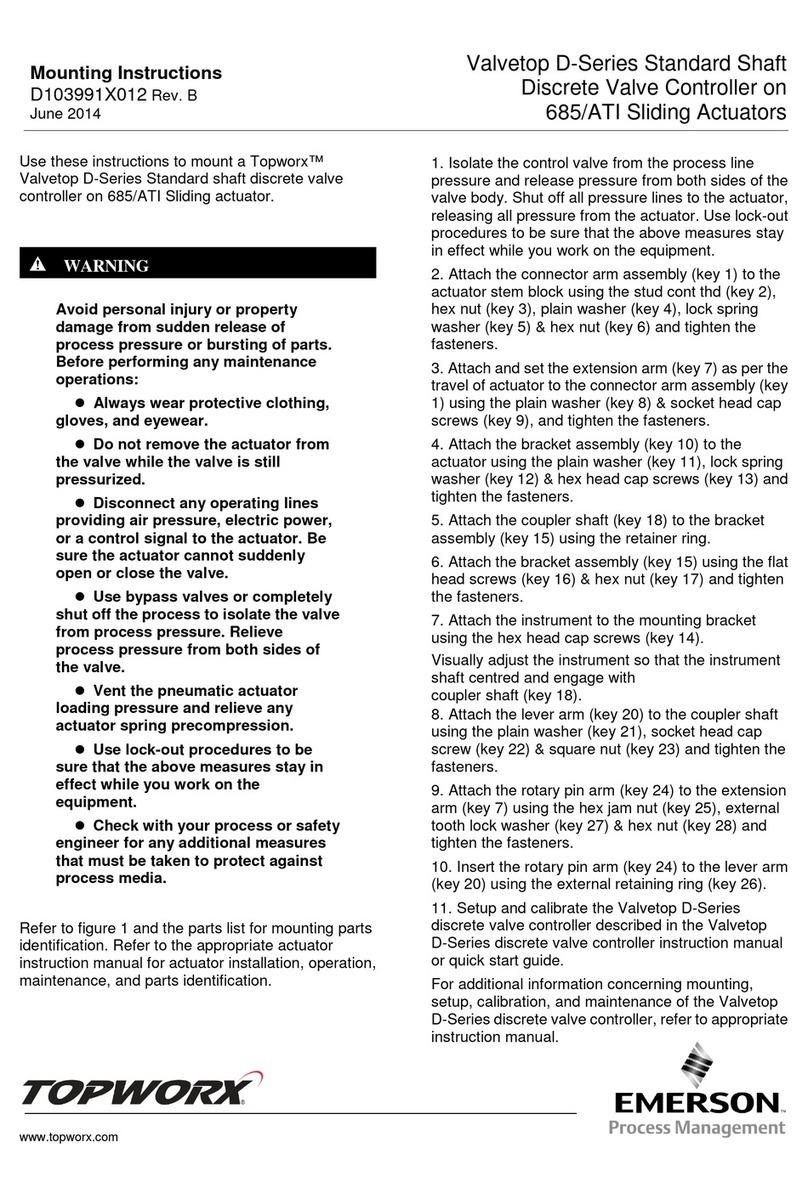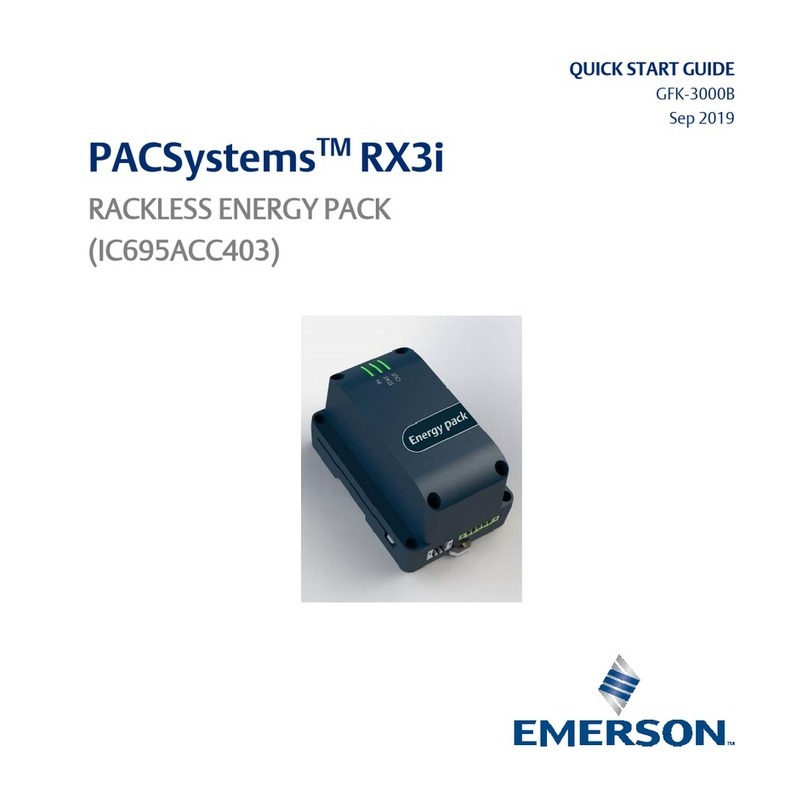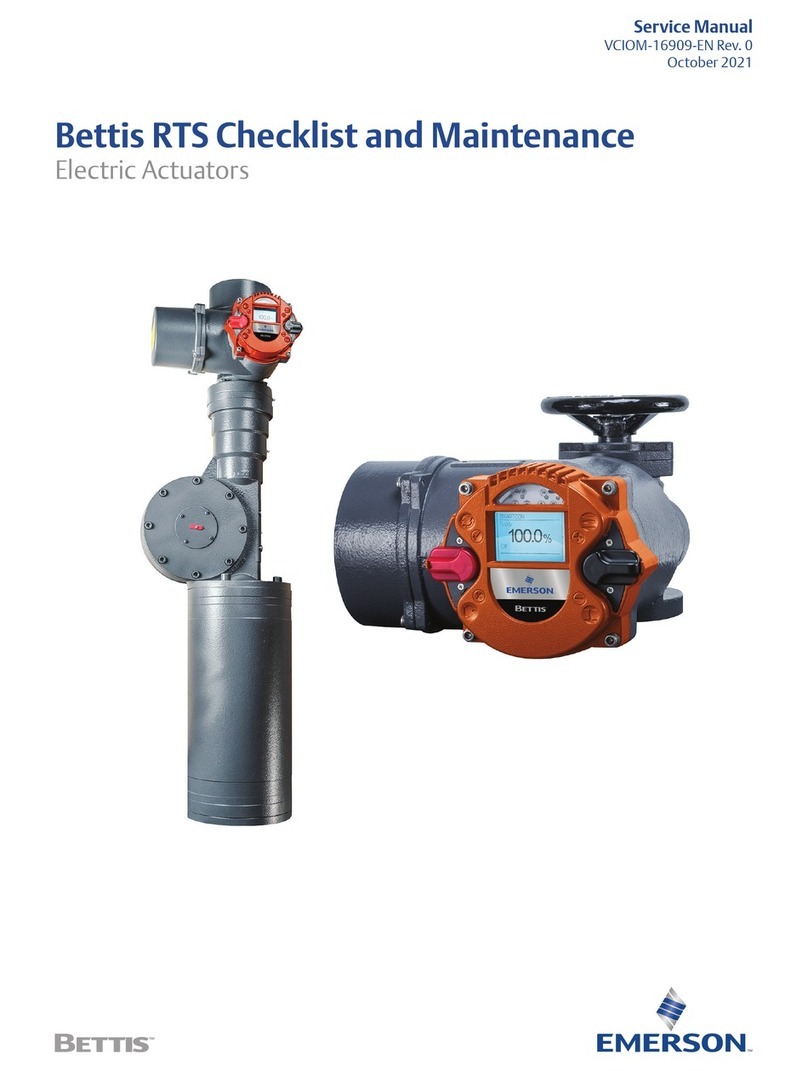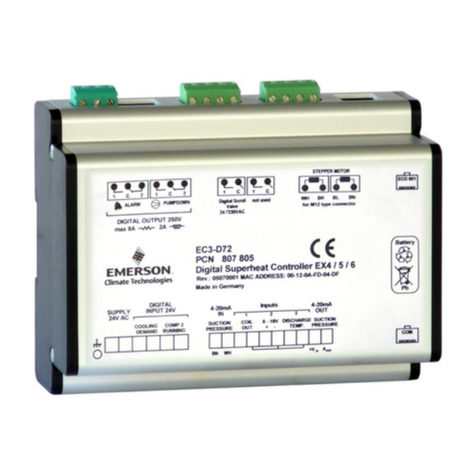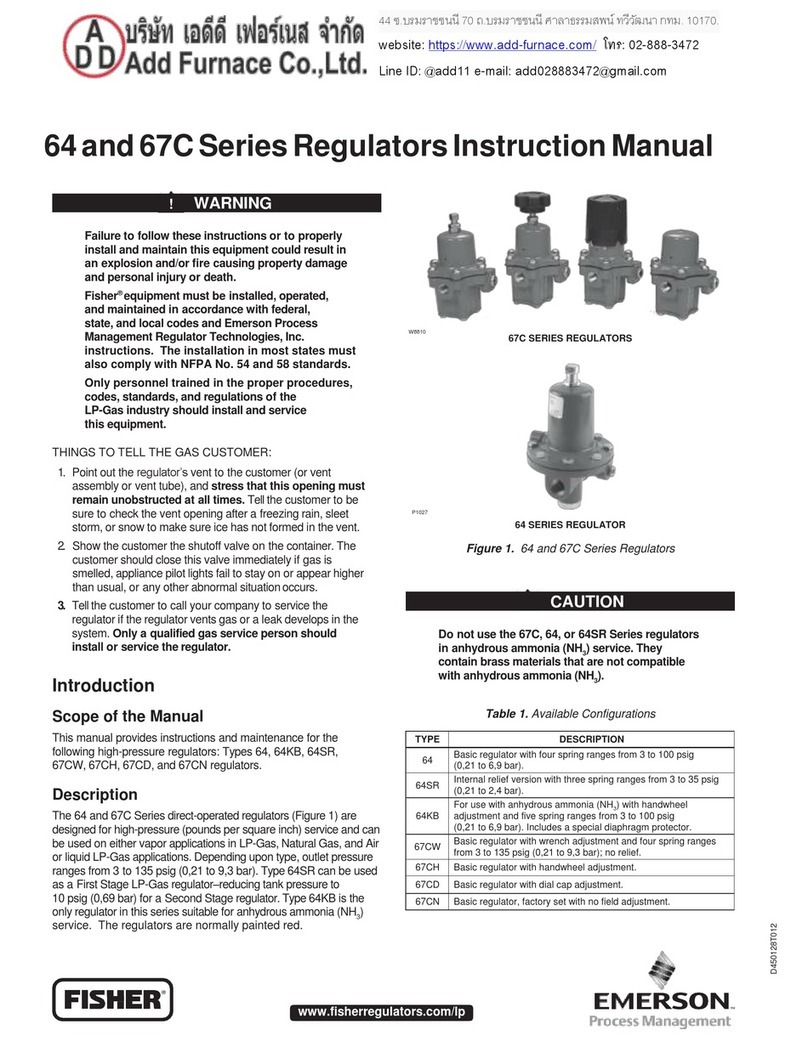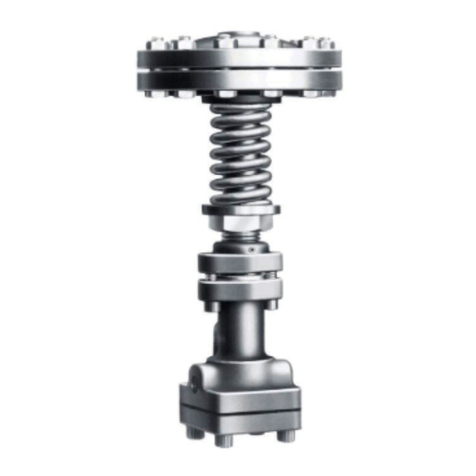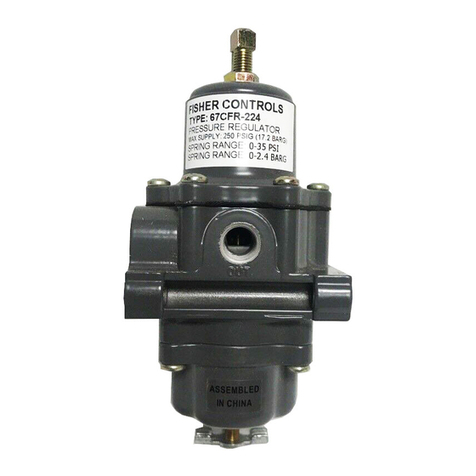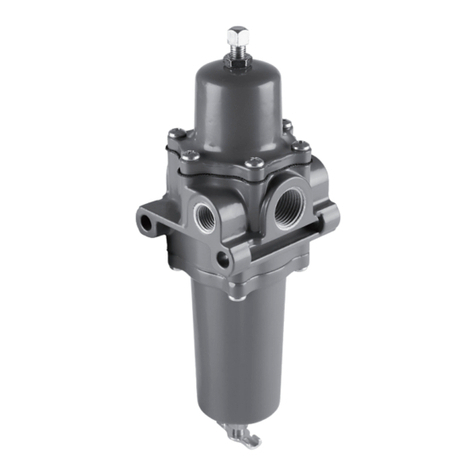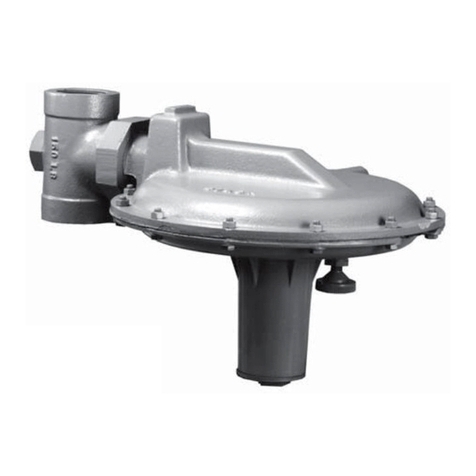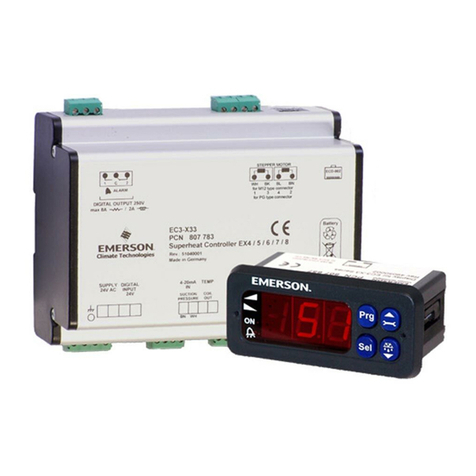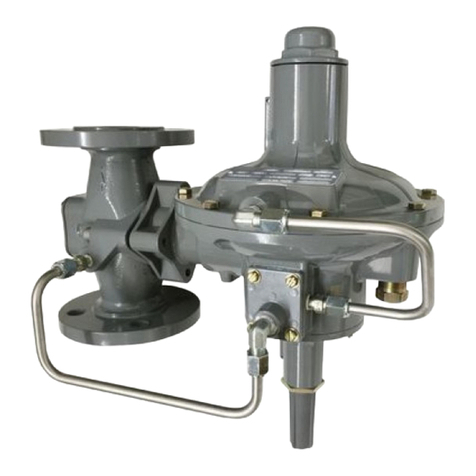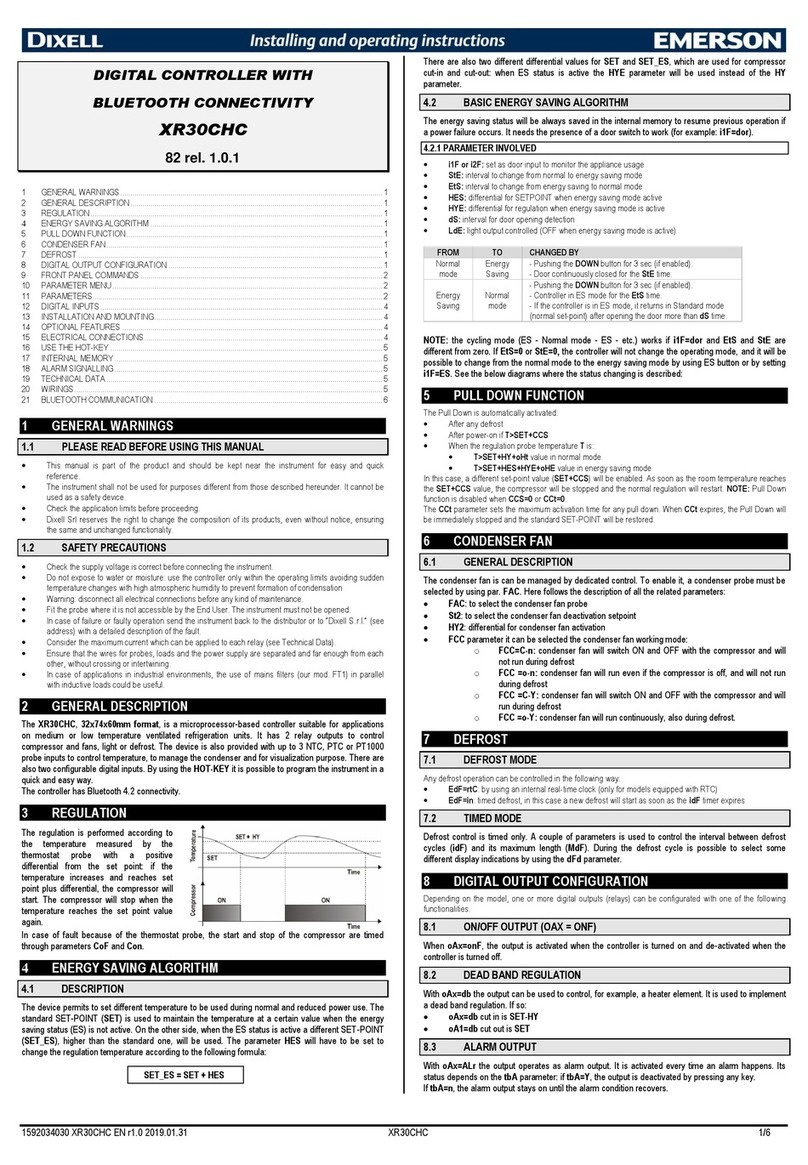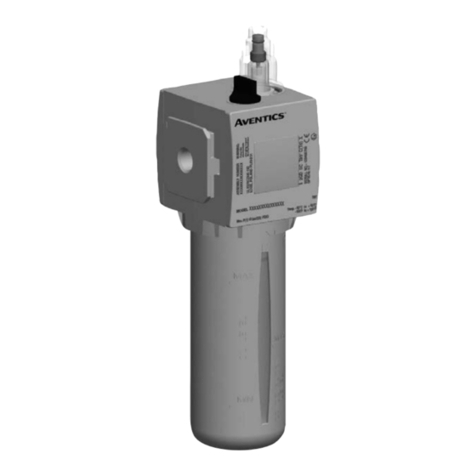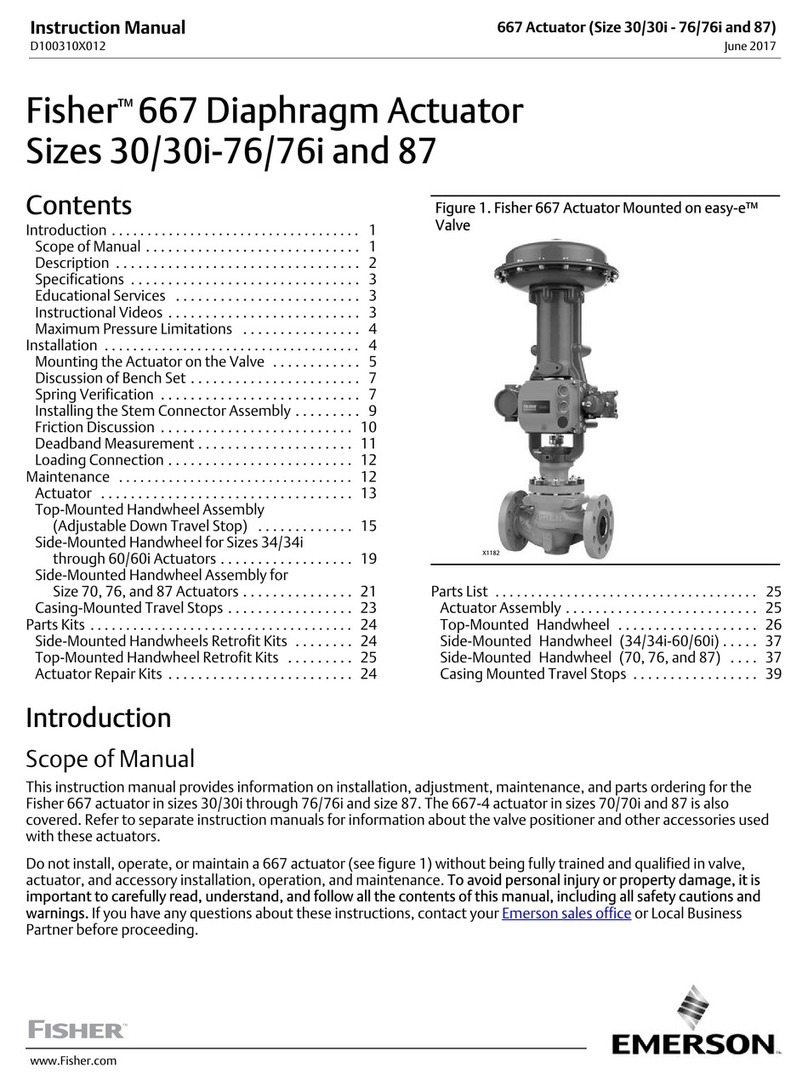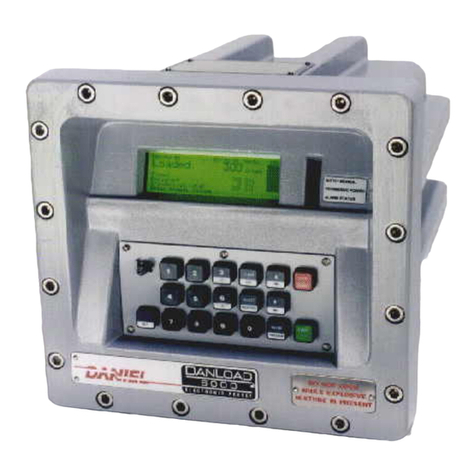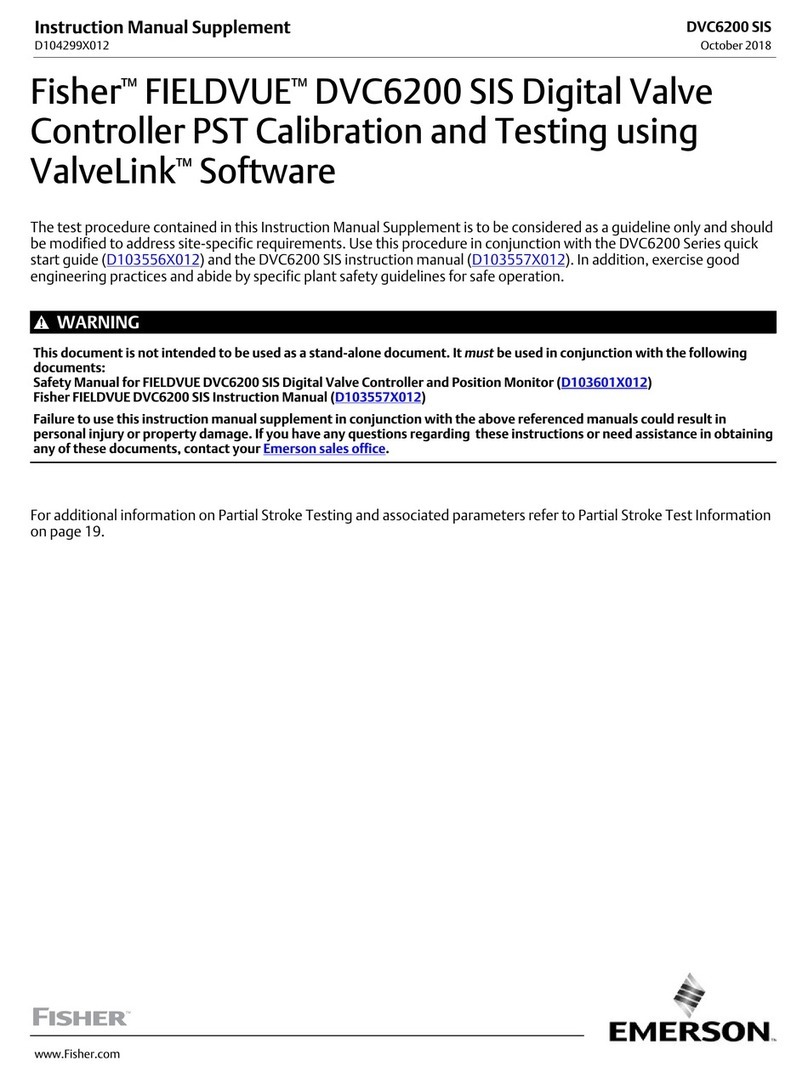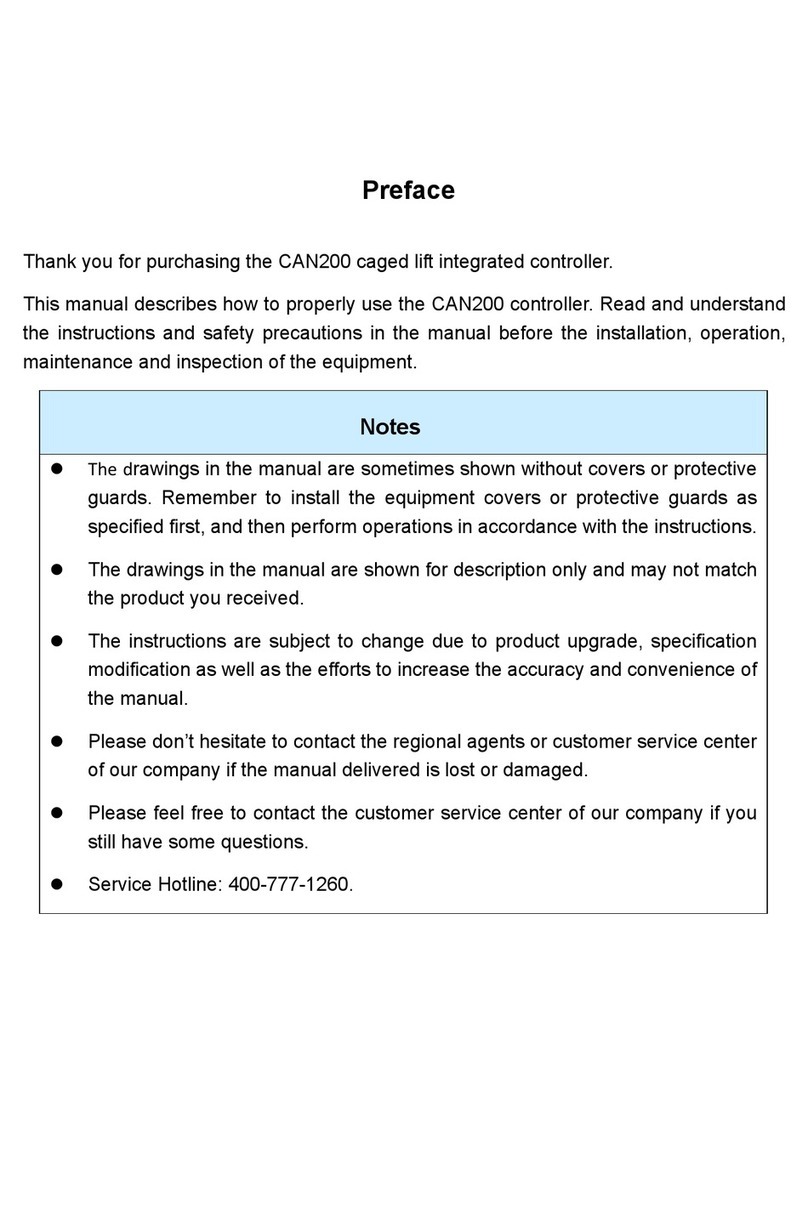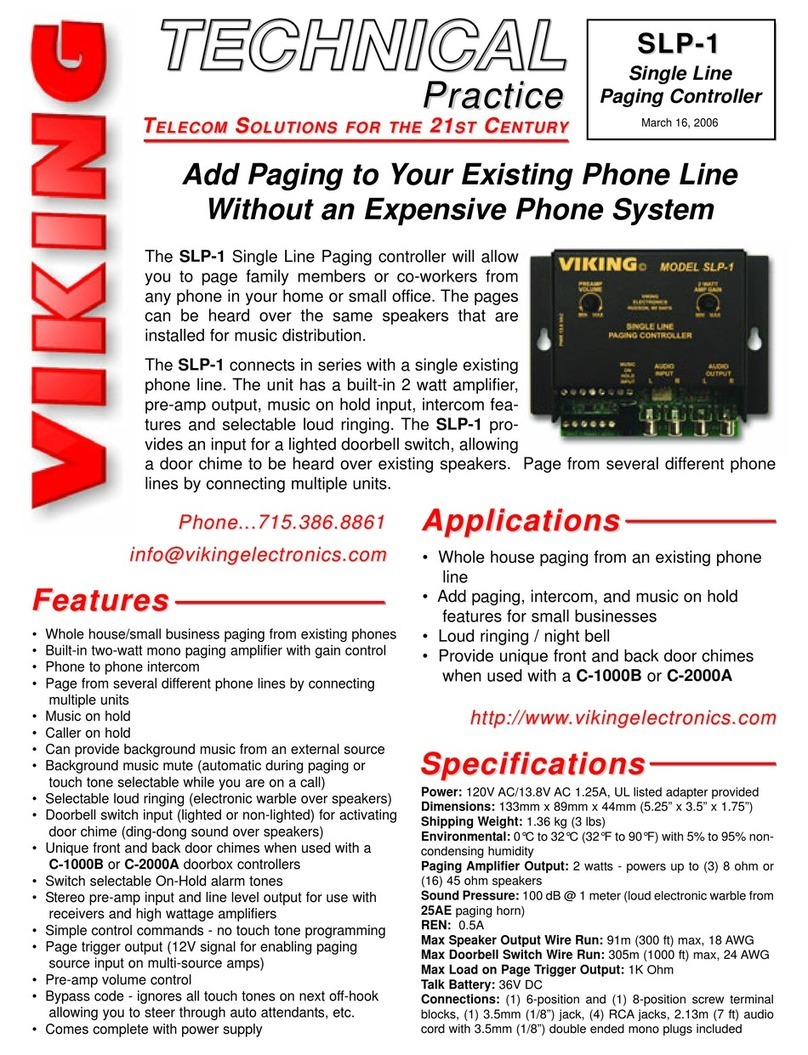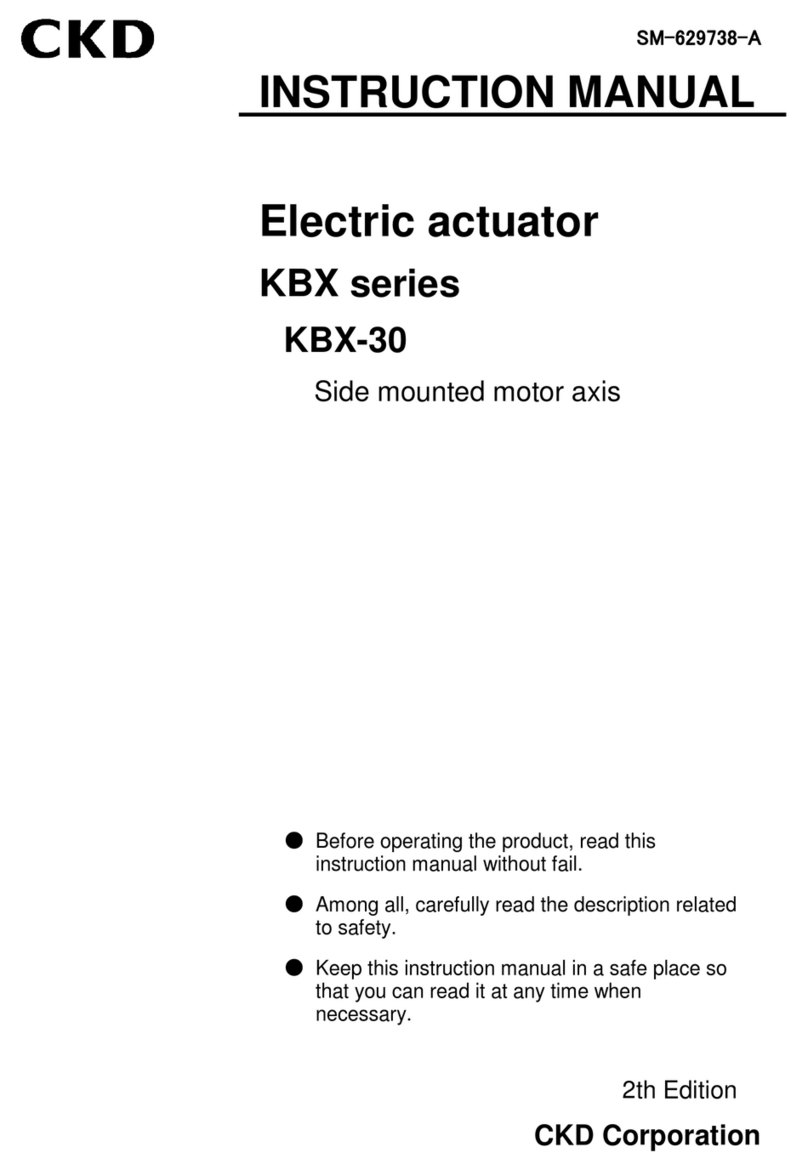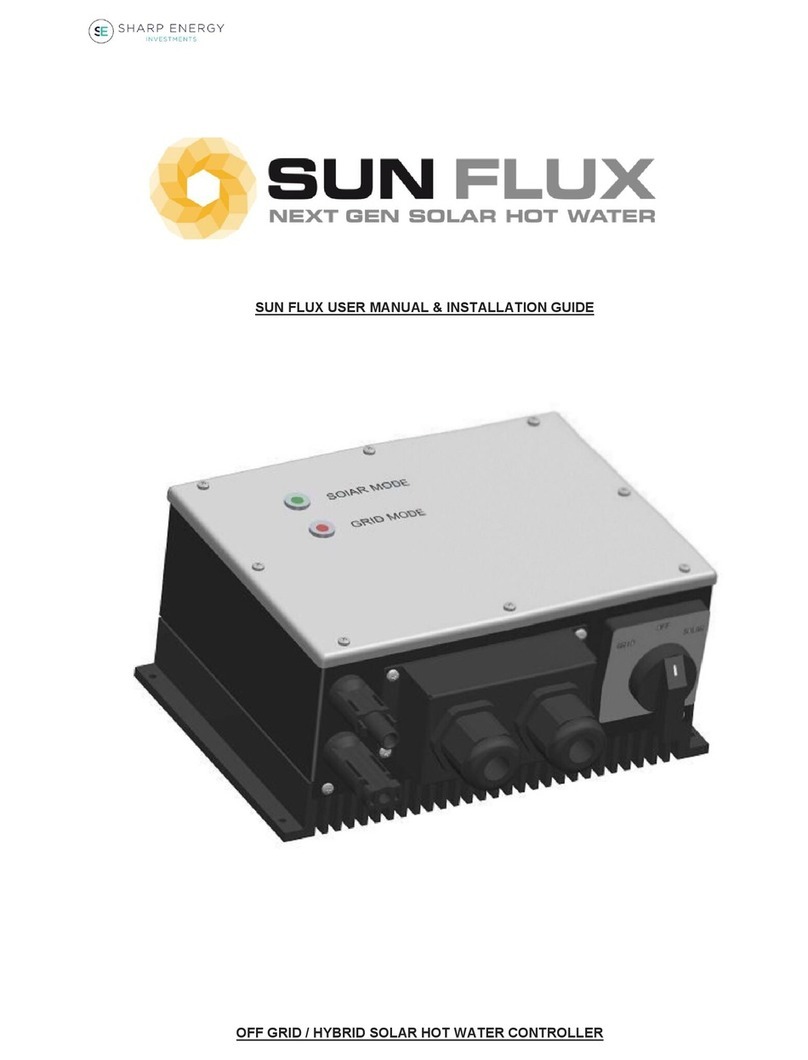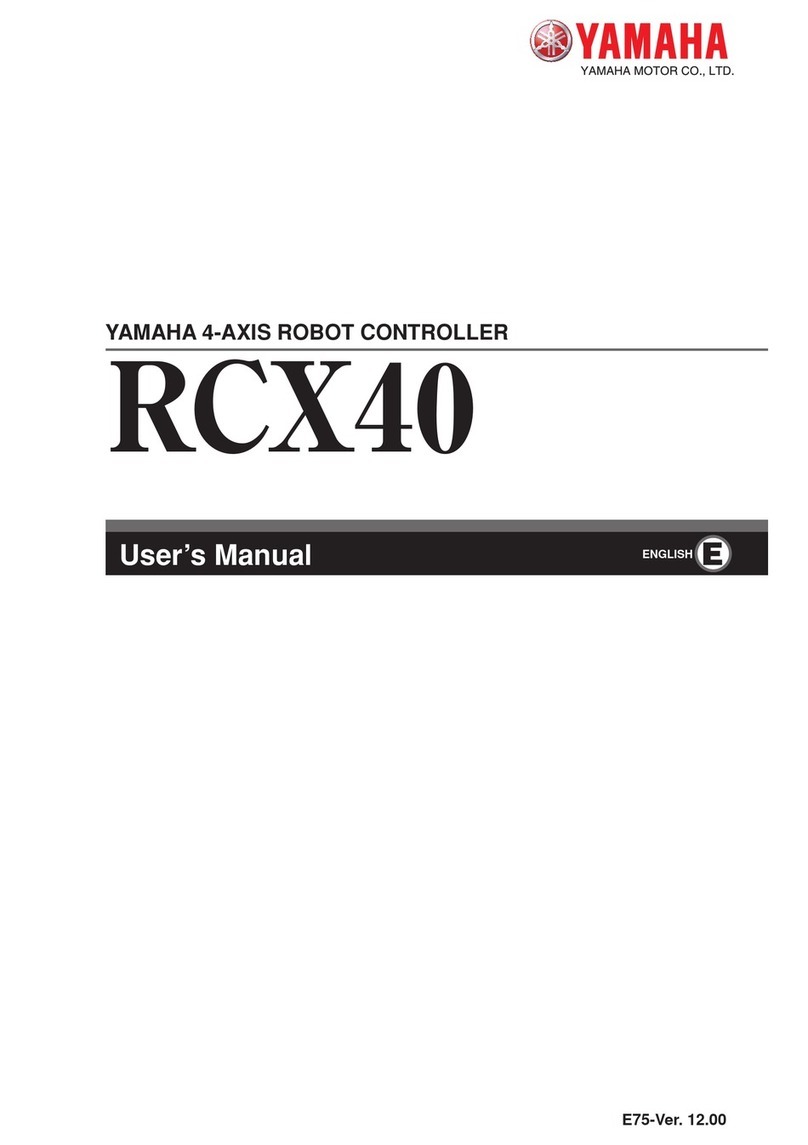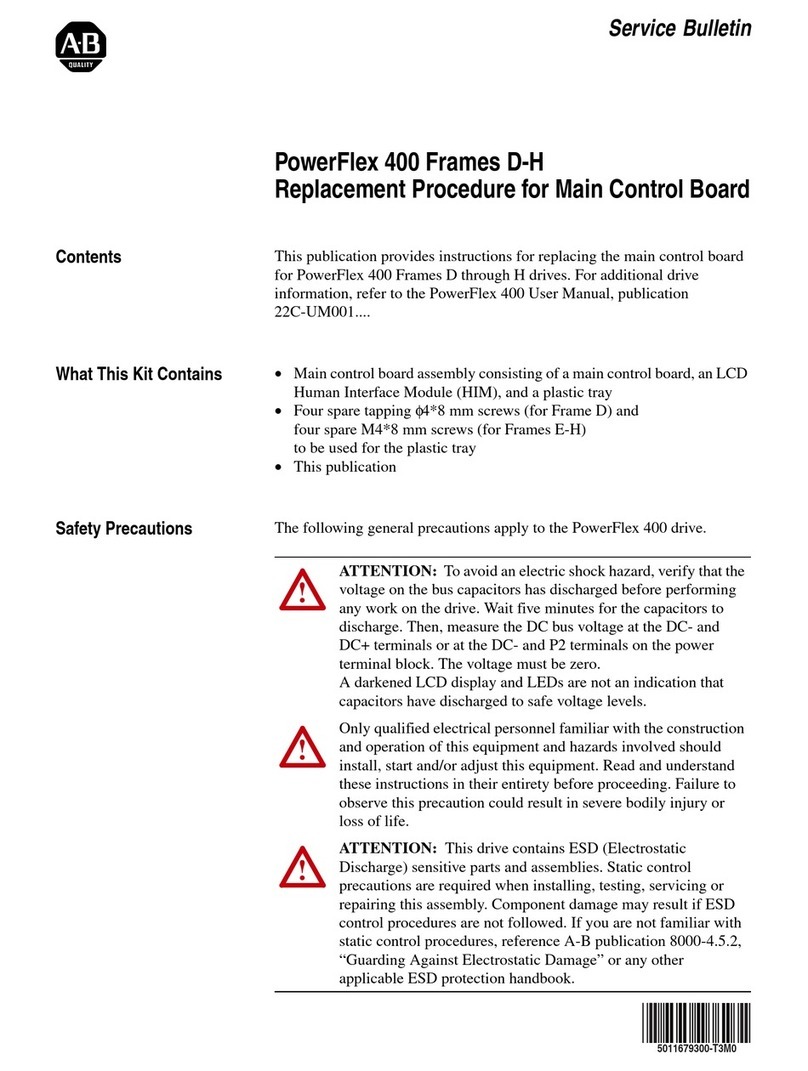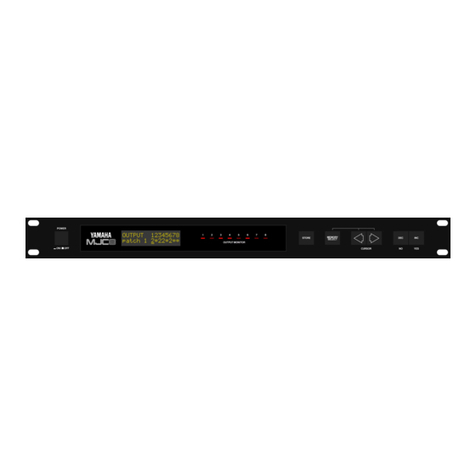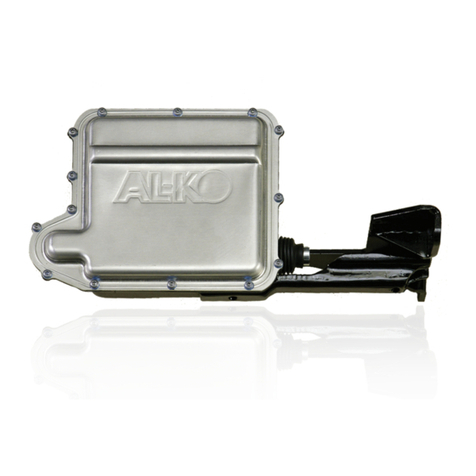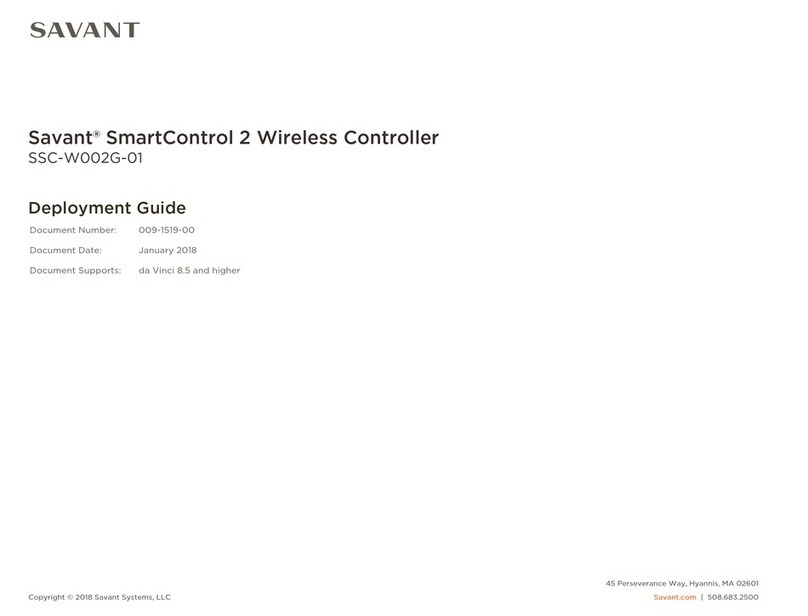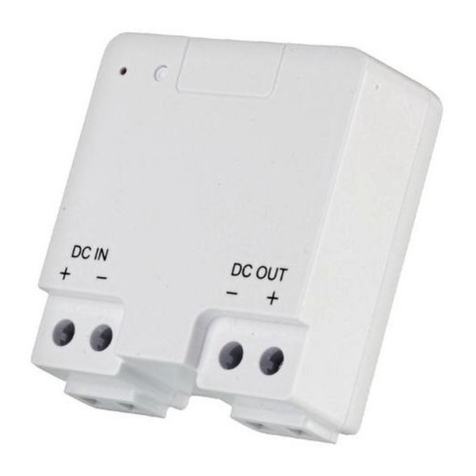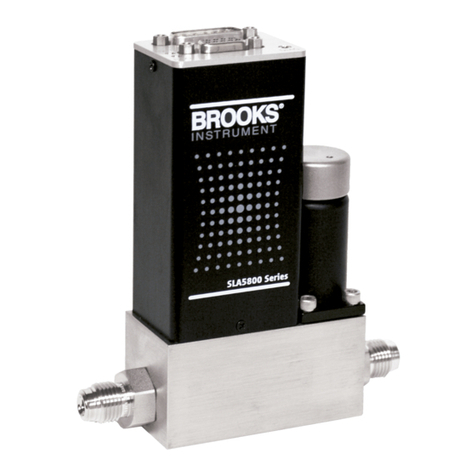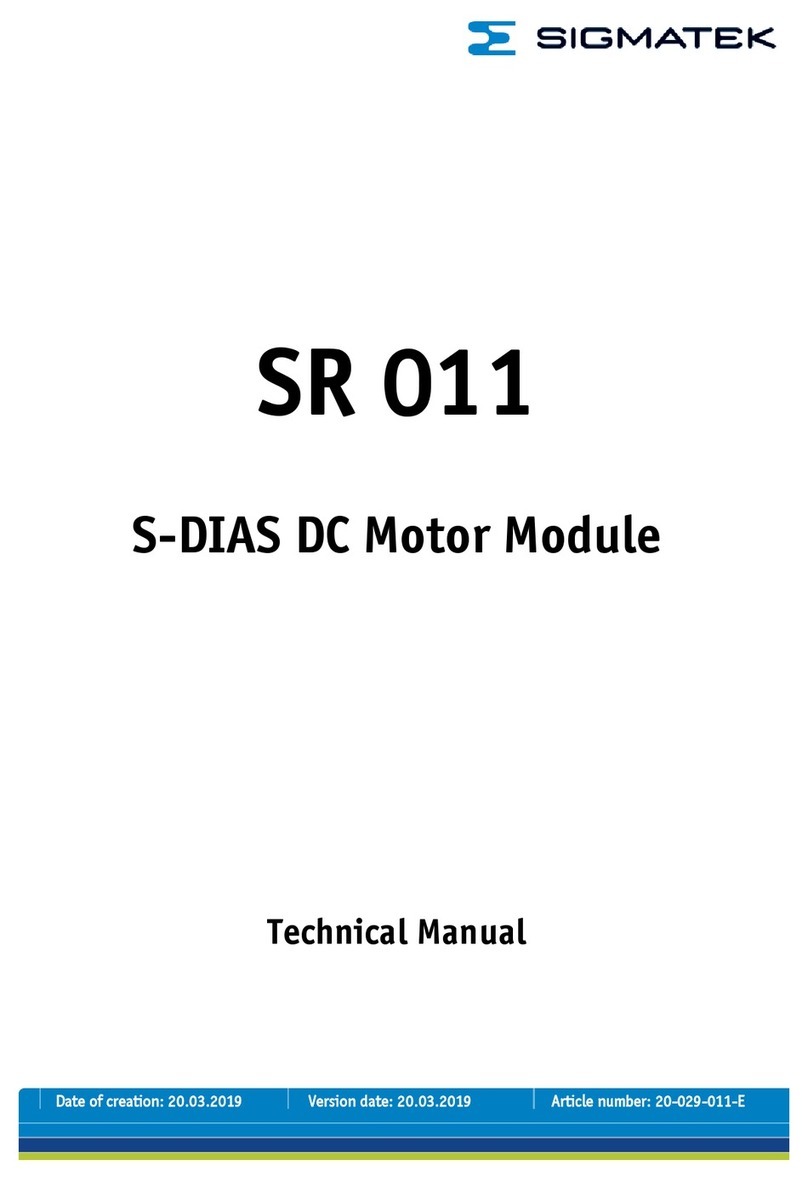
Type T205B
7
gauge to monitor the tank blanketing gas pressure
when making adjustments.
3. After making the adjustment, tighten the locknut
(key 20).
Shutdown
1. Close the nearest upstream shutoff valve and then
close the nearest downstream shutoff valve to vent
the pressure in the regulator properly.
2. Close the valve in the control line and vent the
pressure in the lower casing.
3. Open the vent valve between the regulator and
the downstream shutoff valve nearest to it. All
pressure between these shutoff valves is released
through the open vent valve, since a Type T205B
remains open in response to the decreasing
downstream pressure.
Maintenance
Due to normal wear or damage that may occur
from external sources, inspect and maintain the
regulator periodically. The frequency of inspection
and replacement depends on the severity of service
conditions, test results found during the annual
test, and on applicable codes and regulations. In
accordance with applicable National or Industry
codes, standards and regulations/recommendations,
all hazards covered by specic tests after nal
assembling before applying the CE marking, shall
also be covered after every subsequent reassembly at
installation site, in order to ensure that the equipment
will be safe throughout its intended life.
!
WARNING
To avoid personal injury, property damage,
or equipment damage caused by sudden
release of pressure or explosion of
accumulated gas, do not attempt any
maintenance or disassembly without
pressure and relieving all internal pressure
from the regulator.
Regulators that have been disassembled
for repair must be tested for proper
operation before being returned to
service. Only parts manufactured by
Regulator Technologies should be used
for repairing Fisher®regulators. Restart
gas utilization equipment according to
normal startup procedures.
General Maintenance
1. Visually inspect the regulator and its parts for
any damage.
2. Ensure tight connections, tight seals and safe
operation. If there is an evidence of leakage
or unstable internal motion, a rebuild with seal
replacement and relubrication may be necessary.
3. Observe the blanketing pressure.
4. Inspect the inlet pressure for the proper pressure
(stamped on the regulator nameplate).
Body Area
Perform the following procedure to gain access to
orice and body O-ring. Release all pressure from the
diaphragm casing and open the disk assembly before
performing the following steps. Key numbers are
referenced in Figure 6.
1. Remove the cap screws (key 2), and separate the
diaphragm casing (key 4) from the body (key 1).
2. Remove and inspect the body seal O-ring (key 11)
and the backup ring (key 49).
3. Inspect and replace the orice (key 5) if necessary.
Protect the orice seating surface during
disassembly and assembly. Lubricate the threads
of the replacement orice with a good grade of light
grease and install with 340 to 470 inch-pounds /
38.5 to 53.1 N•m of torque.
4. Place back-up ring (key 49) into the body
(key 1). Then place the body seal O-ring
(key 11) into the body.
5. Place the diaphragm casing (key 4) on the body
(key 1). Secure the diaphragm casing to the
body with the cap screws (key 2) using 90 to
126 inch-pounds / 10.2 to 14.2 N•m of torque.
Diaphragm and Spring Case Area
Perform the following procedure to gain access to
the spring, diaphragm, lever assembly, stem and disk
assembly. Release all pressure from the diaphragm
casing before performing the following steps.
Key numbers are referenced in Figure 6.
1.
remove the closing cap (key 22) and closing cap
gasket (key 25).
loosen the locknut (key 20).
